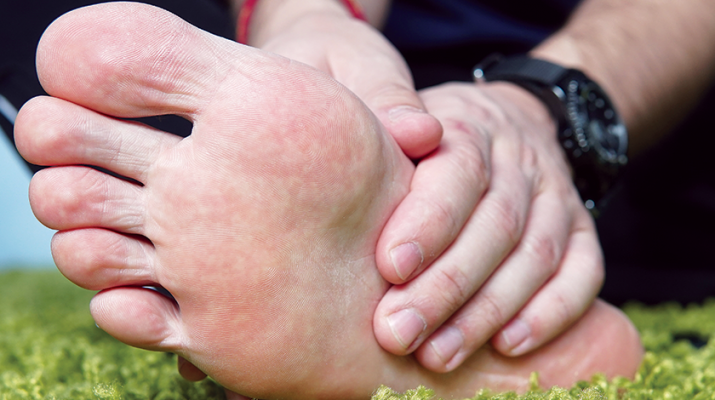Rome Memorial Hospital’s Regional Center for Wound Care steps up

An estimated 30.3 million Americans, or 9.4 percent of the population, have diabetes, including 72 million that are unaware they are living with the disease.
The percentage of adults with diabetes increases with age, reaching a high of 25.2 percent among those aged 65 or older. In addition to age, risk factors for diabetes also include diet, activity level, obesity and heredity.
An important part of managing the disease is protecting your skin.
High blood sugar levels, poor circulation, immune systems issues, nerve damage, and infection may contribute to a non-healing diabetic foot ulcer.
Approximately 25 percent of people living with diabetes will develop a foot ulcer. An estimated 14-24 percent of people with foot ulcers will experience an amputation.
“Chronic foot and leg wounds are often caused by underlying conditions such as diabetes and vascular disease,” said Jennifer Fields, nurse practitioner for Rome Memorial Hospital’s Regional Center for Wound Care. “It is estimated that 25 percent of all diabetics will develop a diabetic foot ulcer, and without treatment the wounds can lead to amputation or death.”
There are common factors of diabetic foot ulcers, including neuropathy and peripheral arterial disease.
Neuropathy is a result of damage to peripheral nerves and often causes weakness, numbness and pain in hands and feet. Similarly, narrowed arteries that reduce blood flow to the limbs cause PAD.

Mary Rose Spellicy, a registered nurse and Rome Memorial patient and staff educator, has been educating patients and the community about diabetes and how to prevent complications, particularly foot and leg wounds, for more than 30 years.
“Over time, diabetes can cause changes in blood vessels and nerves that can affect many different parts of the body,” Spellicy explained. “Early detection, education and management of the disease can help you reduce your risk of developing foot and leg problems that could lead to serious complications.”
RMH and The Regional Center for Wound Care recommend the following to help prevent diabetic foot ulcers:
— Stop smoking immediately.
— Comprehensive foot examinations each time you visit your healthcare provider (at least four times a year)
— Daily self-inspections of the feet, or have a family member perform the inspection
— Regular care of the feet, including cleaning toenails and taking care of corns and calluses
— Choose supportive, proper footwear (shoes and socks)
— Take steps to improve circulation such as eating healthier and exercising on a regular basis.
Spellicy offers free community diabetes education classes the first Monday of each month. To learn more about living with diabetes and protecting your skin, call RMH’s Education Department at 315-338-7143.
Proper wound care is imperative to healing diabetic foot ulcers. The Regional Center for Wound Care offers a number of leading-edge treatments including hyperbaric oxygen therapy, total contact casting, biologic skin substitutes, and negative pressure wound therapy. These specialized wound care therapies can aid in wound closure, new tissue growth, wound tissue regeneration and more.
For more information about the Regional Center for Wound Care and available treatment options, call 315-338-7540.
The center is located at 267 Hill Road in the Griffiss Professional Complex, Griffiss Business and Technology Park, Rome.

